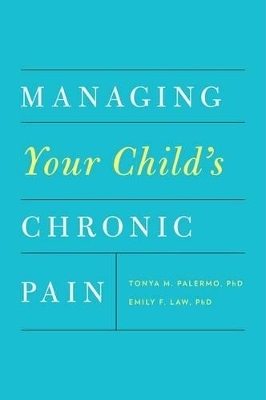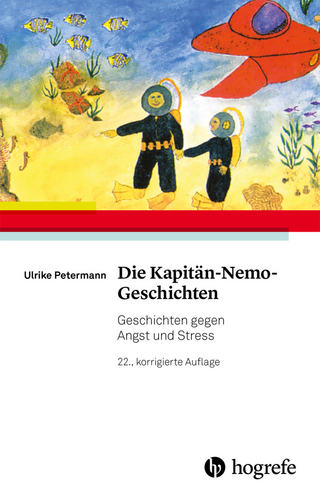
Managing Your Child's Chronic Pain
Oxford University Press Inc (Verlag)
978-0-19-933004-1 (ISBN)
Managing Your Child's Chronic Pain is a resource for parents to learn how to help their children and families cope with persisting pain using cognitive-behavioral therapy (CBT), an effective intervention to treat children with chronic pain. With the easy-to-use psychological treatment strategies in this book, parents will have practical instructions in CBT for pain management.
Authors Tonya M. Palermo and Emily F. Law, pediatric psychologists in the field of child and adolescent chronic pain, discuss the scientific foundation for chronic pain, information about the effectiveness of treatments, and several personal stories of parents and their children with chronic pain. They explain instructions for several different interventions including deep breathing, relaxation strategies, and sleep interventions to allow parents to support these skills with their children. The book concludes with guidance on how to prevent relapse, maintain improvements, and prevent future problems with pain and disability. The first book of its kind, Managing Your Child's Chronic Pain will empower parents to take a hands-on approach to relieving their child's pain.
Tonya M. Palermo, Ph.D., is a Professor in the Department of Anesthesiology and Pain Medicine at University of Washington School of Medicine. Dr. Palermo is an internationally recognized researcher in pediatric chronic pain and has practiced clinically within several interdisciplinary pain programs as a licensed clinical psychologist. Emily F. Law, Ph.D., is an Acting Assistant Professor in the Department of Anesthesiology and Pain Medicine at University of Washington School of Medicine. Her research focuses on the role of psychological factors in pediatric chronic pain. She is a licensed clinical psychologist and provides clinical service through the Pain Medicine Service at Seattle Children's Hospital.
Preface ; Introduction ; Chapter 1. How Pain Affects Children and Families ; Chapter 2. Getting Help and Setting Goals ; Chapter 3. Relaxation Methods for Children and Teenagers ; Chapter 4. Praise, Attention and Reward Systems ; Chapter 5. Lifestyle Factors ; Chapter 6. Sleep Interventions ; Chapter 7. School and Social Life ; Chapter 8. Coping with Pain, Stress and Other Problems ; Chapter 9. Special Topics by Age and Development Level: Issues for Young Children and Older Adolescents ; Chapter 10. Reflection, Maintenance, and Prevention ; Resources ; Appendices ; Appendix A. Instructions for Progressive Muscle Relaxation (for young children ages 5-9) ; Appendix B. Instructions for Progressive Muscle Relaxation (for older children who are over age 10) ; Appendix C. Instructions for Muscle Relaxation with Imagery ; Appendix D. Instructions for Mini-Relaxation ; Appendix E. Point System Worksheet ; Appendix F. Privilege System Worksheet ; Appendix G. Brainstorming Solutions Worksheet ; Index
| Erscheint lt. Verlag | 9.7.2015 |
|---|---|
| Verlagsort | New York |
| Sprache | englisch |
| Maße | 155 x 231 mm |
| Gewicht | 318 g |
| Themenwelt | Sachbuch/Ratgeber ► Gesundheit / Leben / Psychologie ► Krankheiten / Heilverfahren |
| Geisteswissenschaften ► Psychologie ► Klinische Psychologie | |
| Medizin / Pharmazie ► Medizinische Fachgebiete ► Pädiatrie | |
| Medizin / Pharmazie ► Medizinische Fachgebiete ► Psychiatrie / Psychotherapie | |
| Medizin / Pharmazie ► Medizinische Fachgebiete ► Schmerztherapie | |
| ISBN-10 | 0-19-933004-2 / 0199330042 |
| ISBN-13 | 978-0-19-933004-1 / 9780199330041 |
| Zustand | Neuware |
| Informationen gemäß Produktsicherheitsverordnung (GPSR) | |
| Haben Sie eine Frage zum Produkt? |
aus dem Bereich


